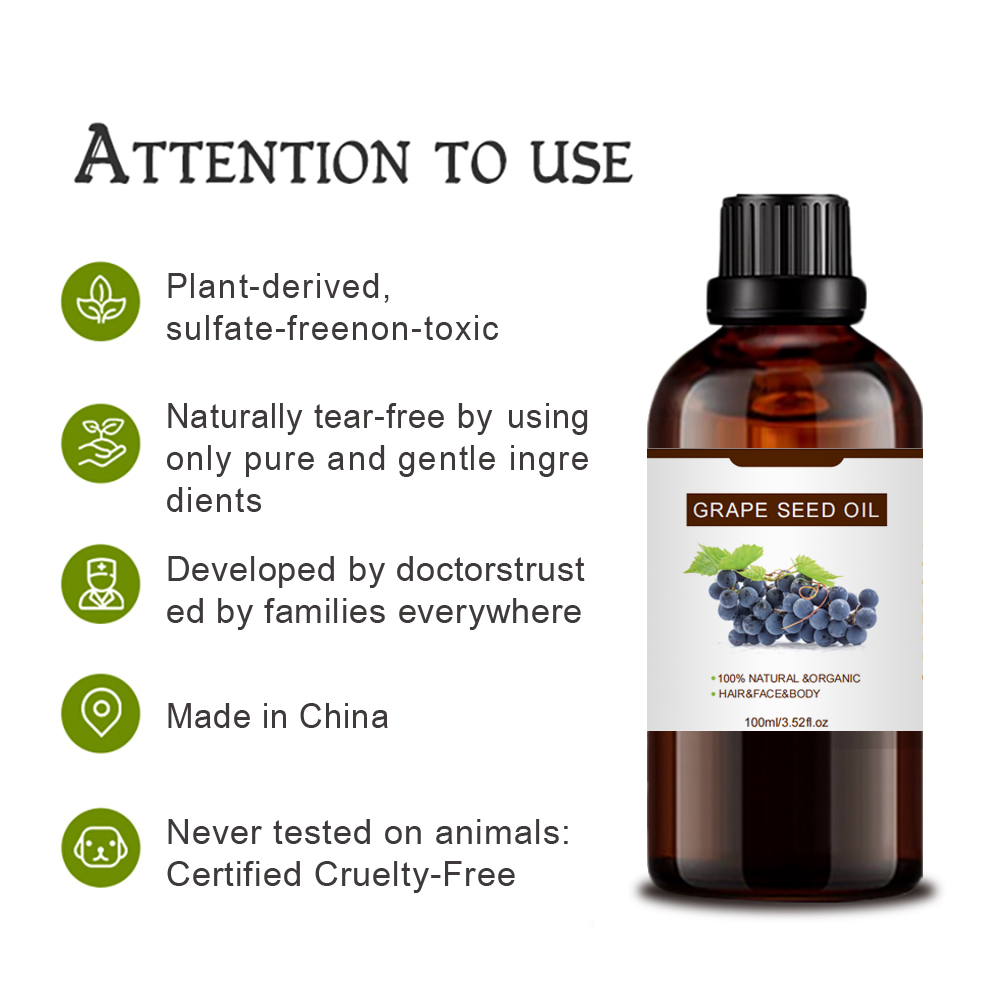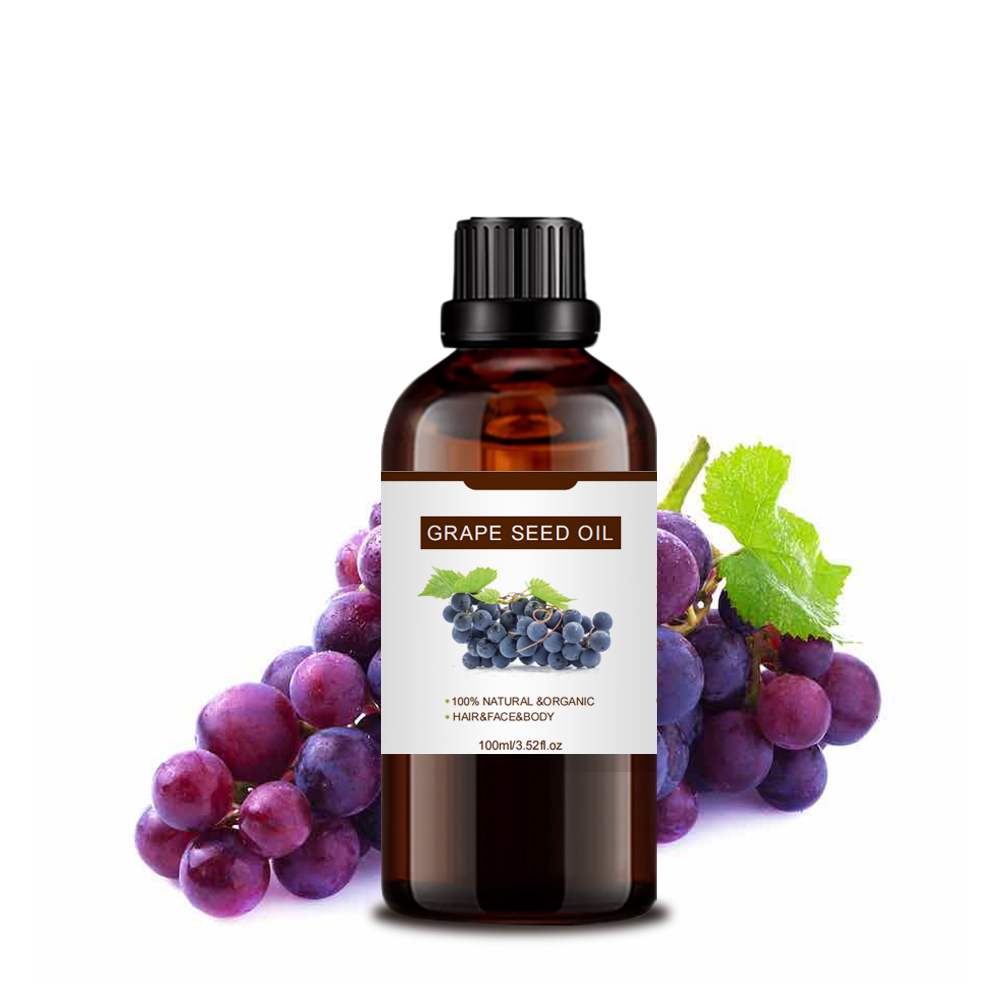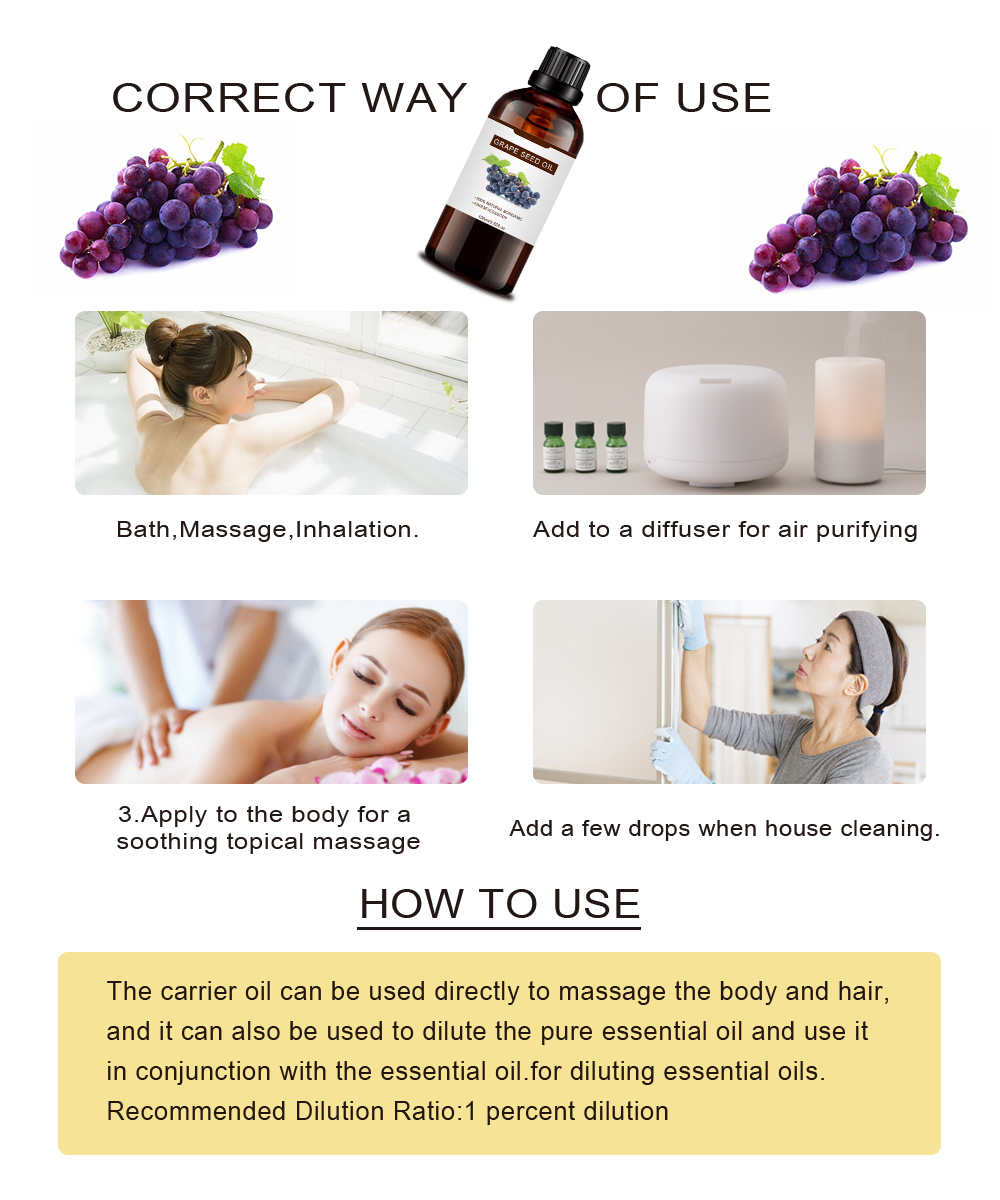What Is Grapeseed Oil
Grapeseed oil is made by pressing the seeds of grapes, which believe it or not contain fatty acids. These are the same grapes used to make wine and grape juice, which are both high in antioxidants just like grapeseed oil and grapeseed extract are.
Health-promoting compounds found in this oil include not only polyunsaturated fats, but also phytochemicals including proanthocyanidins, pycogeneol, tocopherol, linolenic acid and others, which research shows have powerful antioxidant effects.
Grapeseed oil has a very high content of PUFAs, in the range of 85–90 percent. Linoleic acid is the most abundant fatty acid in cold-pressed grapeseed oils and has been found to play a direct role in maintaining the integrity of the water permeability barrier of the skin.
Benefits for Skin
1. Hydrates Skin and Reduces Dryness
Skin dryness is a common problem among both children and adults due to causes including frequent use of hot water, soaps, detergents, and irritants such as perfumes, dyes, etc. These products can remove natural oils from the skin’s surface and cause a disruption in the skin’s water content, leading to dryness and loss in elasticity, as well as itching and sensitivity.
2. May Help Fight Acne
Some research has shown that grapeseed oil has mild antimicrobial properties, meaning it can help prevent accumulation of bacteria that can lead to clogged pores and acne breakouts. It’s also rich in phenolic compounds, fatty acids and vitamin E that may help heal scars or marks from previous breakouts.
Because it’s not a heavy oil and is appropriate for sensitive skin, it’s even safe to use grapeseed oil on oily skin in small amounts. For even stronger acne-fighting effects, it can be combined with other herbal products and essential oils such as tea tree oil, rose water and witch hazel.
3. Can Help Defend Against Sun Damage
Is grape seed oil good for your face if you’ve developed sun damage? Yes; because it contains a number of antioxidants — such as vitamin E, proanthocyanidin, flavonoids, carotenoids, phenolic acids, tannins and stilbenes — it may have anti-aging and anti-inflammatory effects. Vitamin E, for example, contributes to the beneficial effects of this oil because of its high antioxidant activity and protection of skin cells.
Thanks to its ability to help defend against oxidative stress, applying grapeseed oil can improve your skin’s appearance and reduce minor signs of aging, such as loss of elasticity and dark spots.
4. May Help Support Wound Healing
Although most studies researching grapeseed oil’s effects on wound care have been conducted in labs or on animals, there’s some evidence that when topically applied it can help with faster wound healing. One mechanism by which it works is through enhancing synthesis of vascular endothelial growth factor which forms connective tissue.
It also has antimicrobial activity against pathogens that can cause infections in wounds.
5. Can Be Used As a Massage or Carrier Oil
Grapeseed makes a good, inexpensive massage oil for all skin types, plus it can be mixed with various essential oils in order to improve its effectiveness.
For example, combining it with lavender oil can help to reduce skin redness and inflammation, while mixing it with eucalyptus oil and applying to the chest can help reduce congestion.
It’s also possible to use the oil with peppermint, frankincense or lemon oil for purposes including to fight acne, tension headaches and joint pain when massaged into the skin.
Here’s how to use grapeseed oil for skin moisturizing, tightening and more:
- For moisturizing your face — You can use grapeseed oil alone just like a serum, or mix a few drops into your favorite face lotions/creams. Try combining it with other skin soothers like aloe vera, shea butter, coconut oil or rose water. You can also use it to help remove makeup before cleansing your skin and then moisturizing.
- As a body moisturizer — Some people prefer to apply the oil while in the shower or just after, which helps to prevent a mess if you use a lot. However, even two or three drops can be used to hydrate small patches of dry skin.
- To treat acne — Wash your face with a gentle cleanser and then apply a small amount of grapeseed oil (start with several drops), perhaps mixed with acne-fighting essential oils such as frankincense or lavender. You can leave these oils on your skin, or use them to create a thicker mask that you leave on for about 10 minutes to seep in, then wash off.
- For massages — Warm the oil slightly in your hands before using anywhere on your body or scalp that you’d like (note: the oil is also great for hair, such as by de-frizzing and moisturizing your scalp).
- For skin tightening/anti-aging effects — Apply several drops over your whole, cleaned face before bed and again in the morning before heading into the sun. This works best when done daily, especially if you use other anti-aging essential oils and ingredients like jojoba oil, pomegranate seed extract and frankincense oil. You can also gently dab a few drops around any dark circles under your eyes to help reduce puffiness.

Post time: Jul-26-2023





